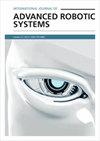基于YOLOv5和DeepSORT的地标检测和跟踪的无人机单目相机视觉定位
IF 2.1
4区 计算机科学
Q2 Computer Science
International Journal of Advanced Robotic Systems
Pub Date : 2023-05-01
DOI:10.1177/17298806231164831
引用次数: 3
摘要
当基于卫星的定位系统不可用时,绝对视觉定位对无人机具有重要意义。随着深度学习领域的快速发展,无人机对地标的实时视觉检测和跟踪可以在机载实现。这项研究展示了一个基于地标的无人机低空飞行视觉定位框架。YOLOv5和DeepSORT分别用于多目标检测和跟踪。无人机定位是根据带有地理标记的发射塔与单目相机拍摄的注释图像之间的几何相似性来实现的。在基于Rflysim的仿真和基于四旋翼机的真实飞行中都完成了验证。定位精度约为10m,位置更新频率达到5Hz,具有商用入门级边缘人工智能平台。所提出的视觉定位策略不需要卫星图像作为参考地图,这节省了大量的GPU内存,并使小型无人机上的端到端实现成为可能。本文章由计算机程序翻译,如有差异,请以英文原文为准。
Visual localization with a monocular camera for unmanned aerial vehicle based on landmark detection and tracking using YOLOv5 and DeepSORT
Absolute visual localization is of significant importance for unmanned aerial vehicles when the satellite-based localization system is not available. With the rapid evolution in the field of deep learning, the real-time visual detection and tracking of landmarks by an unmanned aerial vehicle could be implemented onboard. This study demonstrates a landmark-based visual localization framework for unmanned aerial vehicles flying at low altitudes. YOLOv5 and DeepSORT are used for multi-object detection and tracking, respectively. The unmanned aerial vehicle localization is achieved according to the geometric similarity between the geotagged transmission towers and the annotated images captured by a monocular camera. The validation is accomplished both in the Rflysim-based simulation and the quadrotor-based real flight. The localization precision is about 10 m, and the location update frequency reaches 5 Hz with a commercially available entry-level edge artificial intelligence platform. The proposed visual localization strategy needs no satellite image as a reference map, which saves a significant amount of the GPU memory and makes possible the end-to-end implementation on small unmanned aerial vehicles.
求助全文
通过发布文献求助,成功后即可免费获取论文全文。
去求助
来源期刊
CiteScore
6.50
自引率
0.00%
发文量
65
审稿时长
6 months
期刊介绍:
International Journal of Advanced Robotic Systems (IJARS) is a JCR ranked, peer-reviewed open access journal covering the full spectrum of robotics research. The journal is addressed to both practicing professionals and researchers in the field of robotics and its specialty areas. IJARS features fourteen topic areas each headed by a Topic Editor-in-Chief, integrating all aspects of research in robotics under the journal''s domain.

 求助内容:
求助内容: 应助结果提醒方式:
应助结果提醒方式:


